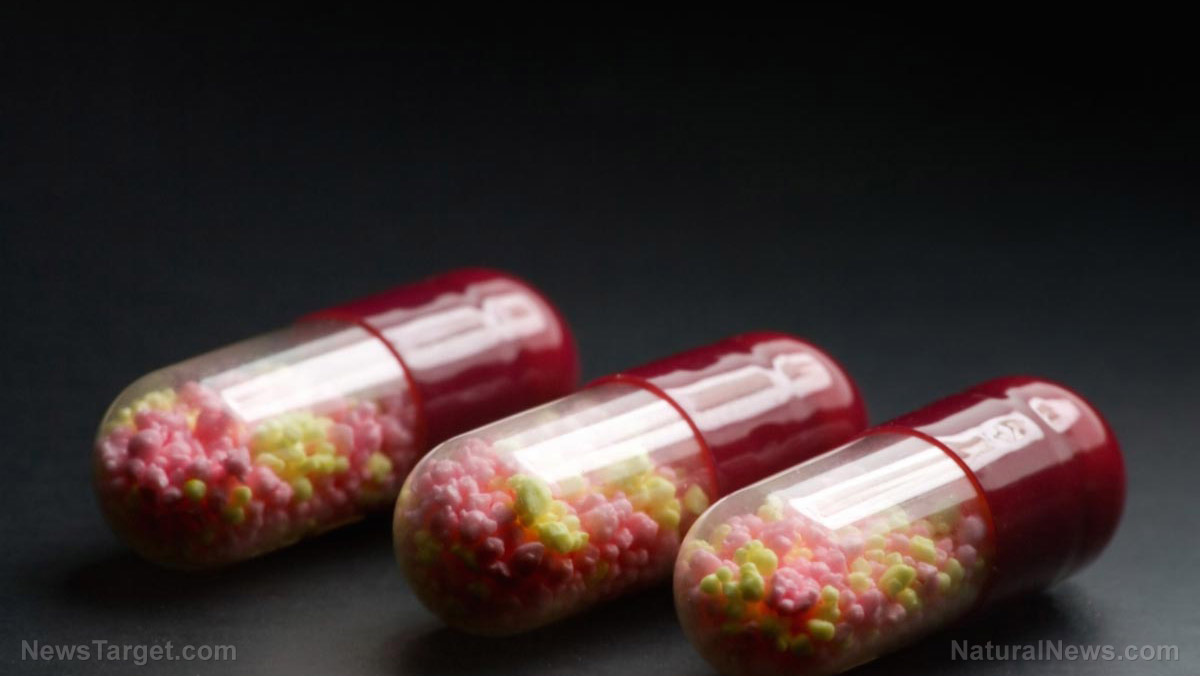Experts warn of antibiotic shortage amid increase in cases of invasive strep A
04/24/2023 / By Zoey Sky

Group A Streptococcus bacteria, or strep A, usually cause mild bacterial infections such as strep throat and impetigo. However, health experts warn that cases involving more invasive and deadlier forms of the bacteria are currently on the rise.
Several countries, including the U.S., have observed an unusual increase in invasive strep A infections and scarlet fever after the Wuhan coronavirus (COVID-19) pandemic.
At the same time, there’s an alarming shortage of antibiotics commonly prescribed to treat strep A.
What is strep A?
Group A Streptococcus (GAS) are bacteria that cause various diseases in humans. According to data, around 700 million cases of strep A have been reported worldwide and half a million deaths have been caused by this bacterial infection.
Strep A infection causes several generalized symptoms, such as:
- High temperature, swollen glands or an aching body
- A sore throat (for strep throat or tonsillitis)
- A rash that feels rough, scabs or sores (impetigo or scarlet fever)
- Pain and swelling (cellulitis)
- Muscle aches
Impetigo, or school sores, is caused by strep A. The sores form a yellow scab or crust as they heal. The sores are often itchy and look rather unusual, but they usually go away after several days.
Strep throat allows for a lot more variation. Common symptoms of the condition include fever, red cheeks, a sore throat and unusual white patches on swollen tonsils.
Strep throat may have similar symptoms to the flu, but the former is caused by bacteria instead of a virus. The elderly, people suffering from blood deprivation or breakdown and those with chronic medical conditions like diabetes are at great risk of strep throat.
In America, strep A causes an estimated 5.2 million cases of strep throat, 14,000 to 25,000 invasive infections and 1,500 to 2,300 deaths each year, reports the Centers for Disease Control and Prevention (CDC).
Strep throat can develop into a severe health condition called scarlet fever. Scarlet fever, or scarlatina, is most common in children ages five to 15 years old. It causes a vivid rash to appear across the patient’s entire body, hence the descriptive name.
Scarlet fever symptoms include a high fever, a strawberry-red tongue and muscle aches. It also causes swollen lymph nodes and difficulty swallowing.
All strep A-induced diseases are usually treated with antibiotics, but there are some symptoms of scarlet fever you should watch out for. Seek medical attention immediately if you experience difficulty breathing, diarrhea, vomiting, weakness or chest pains.
The gram-negative bacteria behind strep A infection can also cause Streptococcal toxic shock syndrome, which leads to low blood pressure and multiple organ failure, and necrotizing fasciitis, or flesh-eating disease.
Early symptoms of necrotizing fasciitis include a red, warm or swollen area that spreads quickly and severe pain. The condition can also cause a fever during the early stages.
If someone has necrotizing fasciitis, their skin may eventually change color as pus, ulcers, blisters or black spots begin to emerge from the infected area.
Invasive strep A steadily increasing amid antibiotic shortage
Invasive strep A cases are on the rise in many parts of the world, and they are more common in children younger than 10. Invasive strep A occurs when the pathogen reaches parts of the body where it usually is not found, such as the blood, lungs, deep muscle and fat tissue. Disease progression can be extremely fast.
In one reported case, a five-year-old from the U.K. was quickly taken to the hospital. However, the young girl died three days after being diagnosed with invasive strep A infection and admitted to an intensive care unit.
In most cases, a mild strep A infection can be treated at home with plenty of rest and fluids.
But more severe forms of the disease are treated with antibiotics. The antibiotics of choice for treating strep A are amoxicillin and penicillin, but several pharmaceutical companies have recently reported a major shortage of amoxicillin. (Related: Study: Ingredient in toothpaste and mouthwash linked to antibiotic resistance.)
In the past, doctors usually prescribe erythromycin and azithromycin to treat strep throat, particularly for patients who are allergic to penicillin. But the rising resistance to erythromycin and other macrolides, along with clindamycin, has changed the landscape of antibiotics.
According to data, the percentage of invasive strep A infections that are resistant to erythromycin has nearly tripled in the last eight years. In the six years between the CDC’s first Antibiotic Resistance (AR) Threats Report in 2013 to the latest report in 2019, GAS infections have gone up to 4,100 while deaths increased by 290.
The treatment level of GAS is currently considered “concerning.” Because of the increase in erythromycin-resistant strep A infections, more doctors are prescribing amoxicillin for treatment.
According to a survey conducted in early February, the nationwide amoxicillin shortage, which has been reported as early as November 2022, is still ongoing. The survey revealed that 73 percent of the participants have experienced a shortage of antibiotics in their workplaces over the last 45 days.
The survey also revealed that one of the main reasons for the shortage of amoxicillin is the supply chain disruptions during the coronavirus pandemic.
In the survey, nine in 10 respondents said the American government should focus more on manufacturing and distributing amoxicillin in the country instead of getting supplies from abroad.
Supply chain disruptions highlight gaps in the U.S. healthcare system
According to a pharmacist who took part in the survey, the U.S. needs to put more effort into securing the health care needs of Americans.
The pharmacist added that without the ability to acquire even the most basic of medications, people may find it hard to stop worrying because they don’t know who can help them with more complicated issues.
Full domestic production of amoxicillin would cost at least five to 10 percent more than if America acquired it from overseas. But according to the survey, more than 90 and 70 percent of pharmacists, respectively, somewhat or strongly agree that a slight price increase is worth it to acquire the essential medication, particularly in the U.S. where money spent on healthcare exceeds a whopping four trillion dollars.
This over-reliance on foreign medicine supply chains has become a national security issue. Many antibiotics used to be manufactured in the U.S., but since 2019, at least 80 percent of the medical industry’s active pharmaceutical ingredients (APIs) for drugs like amoxicillin have come from overseas. The bulk of APIs are traceable to China or India.
If the Chinese communist regime is the primary adversary of the U.S. when it comes to national security, shouldn’t the country be worried about this threat, especially since America relies heavily on China for its basic medicine supply?
Visit Superbugs.news to learn more about antibiotic-resistant superbugs.
Watch the video below to know more about DNA in COVID-19 vaccines that cause drug resistance.
This video is from the Follower of Christ777 channel on Brighteon.com.
More related stories:
Can probiotics help fight superbugs in the gut?
Antibiotic-resistant SUPERBUGS found in imported SHRIMP sold at Canadian supermarkets.
Good oral hygiene isn’t just for the mouth: It benefits brain health too.
Sources include:
Submit a correction >>
Tagged Under:
antibiotic resistance, antibiotics, Big Pharma, dangerous, drug-resistant bacteria, health coverage, infections, invasive strep A, outbreak, pharmaceutical fraud, rationing, scarcity, superbugs, supply chain
This article may contain statements that reflect the opinion of the author
RECENT NEWS & ARTICLES
COPYRIGHT © 2019 Dangerous.News
All content posted on this site is protected under Free Speech. Dangerous.News is not responsible for content written by contributing authors. The information on this site is provided for educational and entertainment purposes only. It is not intended as a substitute for professional advice of any kind. Dangerous.News assumes no responsibility for the use or misuse of this material. All trademarks, registered trademarks and service marks mentioned on this site are the property of their respective owners.




















